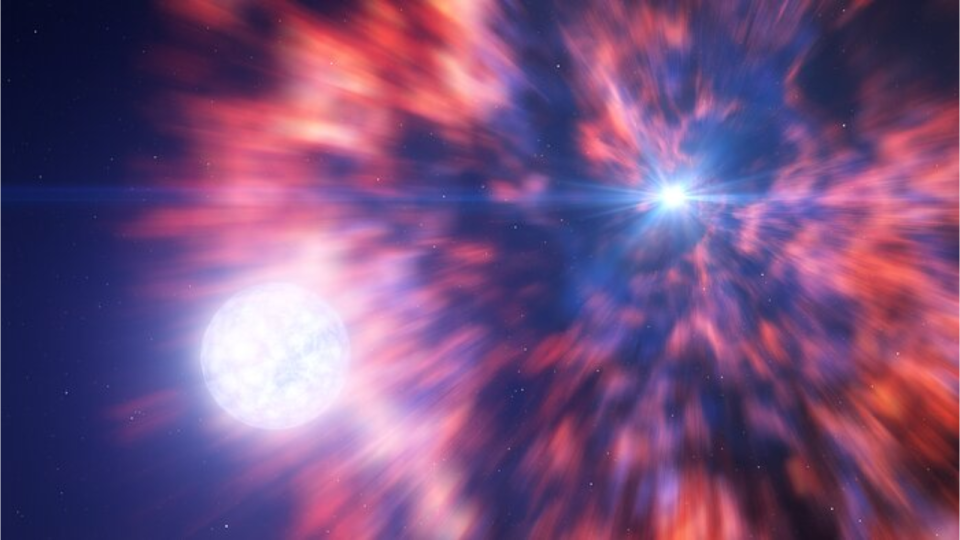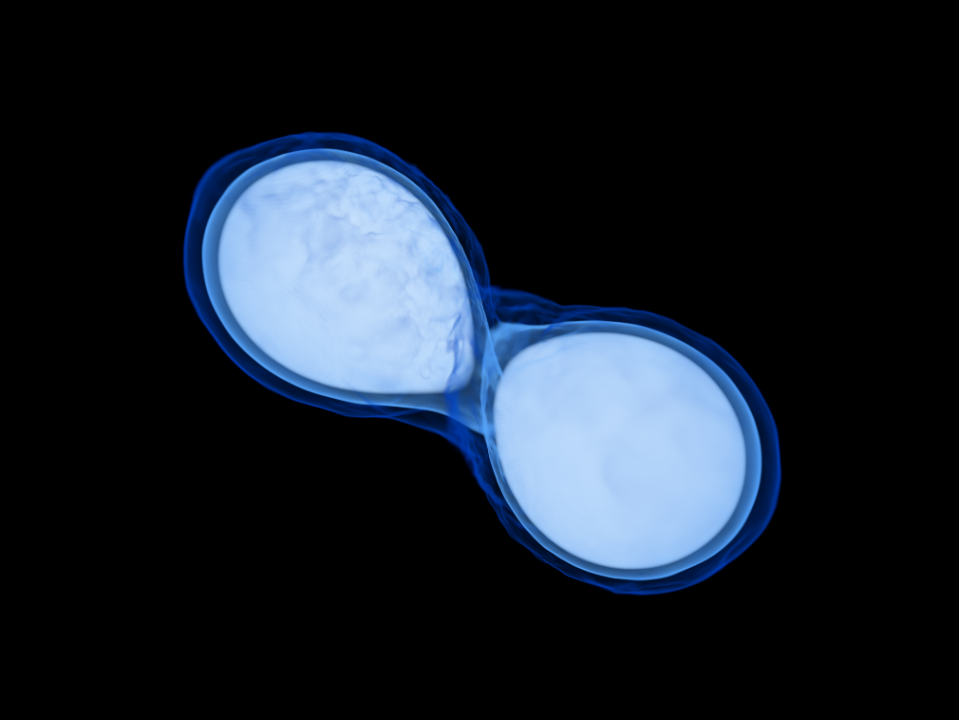When it comes to “shattering” cosmic ghosts, only the most extreme objects in the universe are up to the task: neutron stars.
Scientists have simulated collisions between these extremely dense and dead stars and shown that such powerful events can briefly “trap” neutrinos, also known as “ghost particles.” This discovery could help scientists better understand neutron star mergers as a whole, events that create environments turbulent enough to form elements heavier than iron. Such elements cannot even be created in the hearts of stars; This includes the gold on your finger and the silver around your neck.
Neutrinos are considered the “ghosts” of the particle zoo due to their lack of charge and incredibly small mass. These properties mean that they very rarely interact with matter. To put this into perspective, as you read this sentence, more than 100 trillion neutrinos are flowing through your body at close to the speed of light, and you can’t feel a thing.
These new simulations of neutron star mergers were conducted by Penn State University physicists and ultimately show that the point where these dead stars meet (the interface) becomes incredibly hot and dense. In fact, this situation becomes so extreme that it traps a group of “cosmic ghosts”.
At least for a short while.
Despite their lack of interaction with matter, the neutrinos formed in the collision will remain trapped at the neutron-star-merger interface, becoming much hotter than the relatively cold hearts of the colliding dead stars.
Relating to: James Webb Space Telescope detects neutron star mergers creating gold in the universe: ‘It was exciting’
This is called neutrinos being “out of thermal equilibrium” with the cold neutron star cores. During this hot phase, which lasts about two to three milliseconds, the team’s simulations showed that neutrinos can interact with the coalescence of neutron star matter, ultimately helping to reestablish thermal equilibrium.
“Before merging, neutron stars are effectively cold. Although they can be billions of degrees (Kelvin), their incredible density means that this heat contributes very little to the energy of the system,” said team leader David Radice, assistant professor of physics and astronomy. and astrophysics at Penn State’s Eberly College of Science, he said in a statement. “As they collide, they can get really hot. The interface of colliding stars can be heated to trillions of degrees Kelvin. But they are so dense that photons cannot escape to dissipate heat; instead, we think they cool by emitting neutrinos.”
Setting cosmic ghost traps
Neutron stars are born when the core of a massive star at least eight times the mass of the Sun runs out of fuel for nuclear fusion. Once its fuel supply ends, the star can no longer support itself against the inward push of its own gravity.
This initiates a series of nuclear collapses that trigger the fusion of heavier elements. even heavier elements. This chain ends when the heart of the dying star fills with iron, the heaviest element that can be formed in the cores of even the most massive stars. Gravitational collapse then occurs again, triggering a supernova explosion that blows away the star’s outer layers and most of its mass.
Rather than forging new elements, this final core collapse creates an entirely new state of matter unique to the interiors of neutron stars. Negative electrons and positive protons combine to form an ultra-dense soup of neutrons, which are neutral particles. An aspect of quantum physics called “degeneracy pressure” prevents these neutron-rich nuclei from collapsing further, but this can be overcome by complete collapse of stars of sufficient mass, giving rise to black holes.

The result of this series of collapses is a dense dead star, or neutron star, with one to two times the mass of the original star, squeezed into a width of about 20 kilometers. For context, the matter comprising neutron stars is so dense that if a tablespoon were brought to Earth, it would weigh as much as Mount Everest. Maybe more.
But these extreme stars don’t always live (or die) in isolation. Some binary star systems contain two stars massive enough to give rise to neutron stars. As these binary neutron stars orbit each other, they emit ripples in the fabric of space and time called gravitational waves.
As these gravitational waves echo from neutron star pairs, they carry angular momentum with them. This causes loss of orbital energy in the binary system and causes neutron stars to come together. The closer their orbits are, the faster they emit gravitational waves and the faster their orbits narrow. Eventually, the gravity of the neutron stars kicks in and the dead stars collide and merge.
This collision creates neutron “sprays”, enriching the environment around the merger with free versions of these particles. These can be “captured” by the atoms of elements in this environment during a phenomenon called the “rapid capture process” (r-process). . This creates superheavy elements that undergo radioactive decay to create lighter elements that are still heavier than iron. Think gold, silver, platinum and uranium. The decay of these elements also creates a burst of light that astronomers call a “kilonova.”
The first moments of neutron star collisions
The team says that in the first moments of a neutron star merger, neutrons break apart to form electrons and protons. Researchers wanted to know what might have happened in those first moments. To glean some answers, they created simulations that use large amounts of computing power to model the merger of binary neutron stars and the physics associated with such events.


The Penn State team’s simulations revealed for the first time that, for a brief moment, the heat and density produced by a neutron star collision are sufficient to trap even neutrinos, which under all other circumstances deserve their nickname of ghosts.
“These extreme events are expanding the boundaries of our understanding of physics, and studying them allows us to learn new things,” Radice added. “The time it takes for merging stars to come out of equilibrium is only two to three milliseconds, but time, like temperature, is relative here; the orbital period of two stars before merging can be as short as a millisecond.
“This brief out-of-equilibrium phase is when the most interesting physics emerges. The physics is better understood when the system returns to equilibrium.”
RELATED STORIES:
— A new approach could help scientists see inside a neutron star
— City-sized neutron stars may actually be bigger than we thought
— Heaviest neutron star ever observed is tearing apart its companion
The team thinks that the precise physical interactions that occur during neutron star mergers may influence the light signals from these powerful events that can be observed on Earth.
“How neutrinos interact with the stars’ matter and eventually spread out can affect the oscillations of the merged remnants of two stars, which in turn can affect what the electromagnetic and gravitational wave signals of the merger look like when they reach us. Team member Pedro Luis, a postdoctoral researcher at Penn State and the University of California, Berkeley, said “The next generation of gravitational wave detectors can be designed to look for such signal differences,” Espino said in the statement. In this way, these simulations play a very important role; While it allows us to have an idea about these extraordinary events, it also provides information for future experiments and observations. feedback loop.
“There is no way to reproduce these events to study them experimentally in the laboratory, so the best window we have into understanding what happens during a binary neutron star merger is through simulations based on mathematics arising from Einstein’s theory of general relativity.”
The team’s research was published May 20 in the journal Physical Reviews Letters.